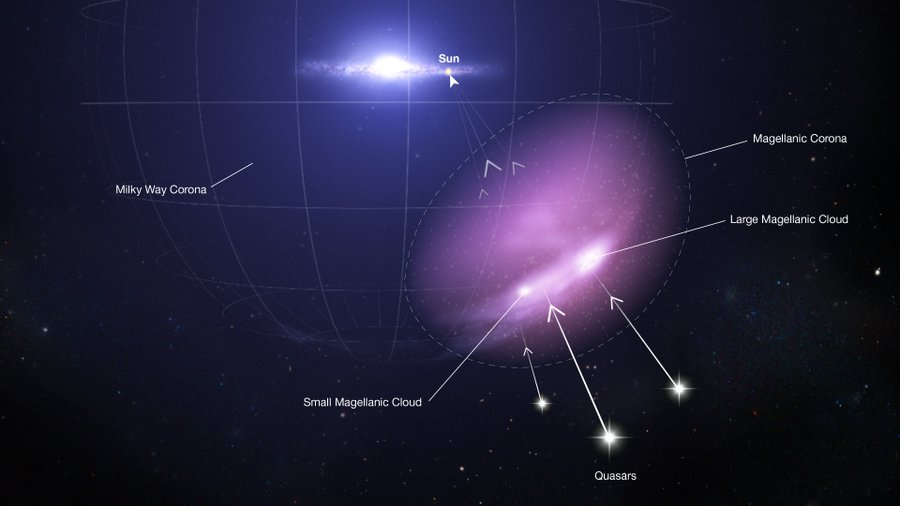Hubble telescope discovers protective shield around two dwarf galaxies

The Large and Small Magellanic Clouds are the two galaxies closest to the Milky Way. And when they were pulled toward our galaxy, billions of years ago, as they orbited each other, they were torn apart, leaving trails of gaseous debris behind.
These dwarf galaxies are still intact and undergoing active star formation, which baffles astronomers.
“A lot of people have been struggling to explain how these streams of material could have existed,” said Danish Krishnarao, associate professor at Colorado College. If this gas is removed from these galaxies, how are they still forming stars?”
With the help of data from NASA's Hubble Space Telescope and the retired Ultraviolet Spectroscopic Explorer (FUSE) satellite, astronomers, led by Krishnarao, have finally found the answer, which is that the Magellanic System is surrounded by a 'corona' (or halo), a protective shield from Supercharged hot gas.
This shield limits the Small and Large Magellanic Clouds, preventing the Milky Way from drawing away its supply of gas, thus allowing them to continue forming new stars.
This discovery, recently published in the journal Nature, addresses a new aspect of galaxy evolution. "Galaxies envelop themselves in gaseous cocoons, which act as defensive shields against other galaxies," said study co-author Andrew Fox of the Space Telescope Science Institute in Baltimore, Maryland.

Astronomers predicted the existence of the halo many years ago. "We knew that the Large Magellanic Cloud would have to be massive enough for a corona to occur," explained Elena Dungia, a research associate at the University of Wisconsin-Madison.
However, although the corona extends more than 100,000 light-years from the Magellanic Cloud and covers much of the southern sky, it is virtually invisible. The mapping required searching for 30 years of archived data to make proper measurements.
Scientists believe that the halo in the galaxy is the remnant of the primordial gas cloud that collapsed to form the galaxy billions of years ago.
Although halos have been seen around distant dwarf galaxies, astronomers had never before been able to observe one in such great detail.
“There are a lot of predictions from computer simulations about what they should look like and how they should interact over billions of years, but on the observational side we can't really test most of them because dwarf galaxies are usually very hard to detect,” Krishnarao explained. Located right on our doorstep, the Magellanic Cloud provides an ideal opportunity to study how dwarf galaxies interact and evolve.
In search of direct evidence of the Magellanic corona, the team combed the Hubble and Ultraviolet Spectroscopic Explorer archives for ultraviolet observations of quasars billions of light-years away.
Quasars, or quasars, are the extremely bright cores of galaxies that harbor massive active black holes.
The team concluded that although the corona would be too faint to see on its own, it should still be visible as a kind of haze that blocks out and absorbs distinct patterns of bright light from background quasars.
Hubble observations of quasars have been used in the past to map the corona surrounding the Andromeda Galaxy (our neighbor Andromeda Galaxy).
By analyzing the patterns in ultraviolet light from the 28 quasars, the team was able to detect and characterize the material surrounding the Large Magellanic Cloud and confirm the presence of the halo.
As expected, the quasar's spectra are imprinted with the distinctive fingerprints of carbon, oxygen and silicon that make up the halo of hot plasma that surrounds the galaxy.
The team also discovered that the amount of gas decreases with distance from the center of the Large Magellanic Cloud. Krishnarao noted, “It is a perfect alarm signature that this aura is already there. It really cocooned and protected the galaxy.”
Source: websites

